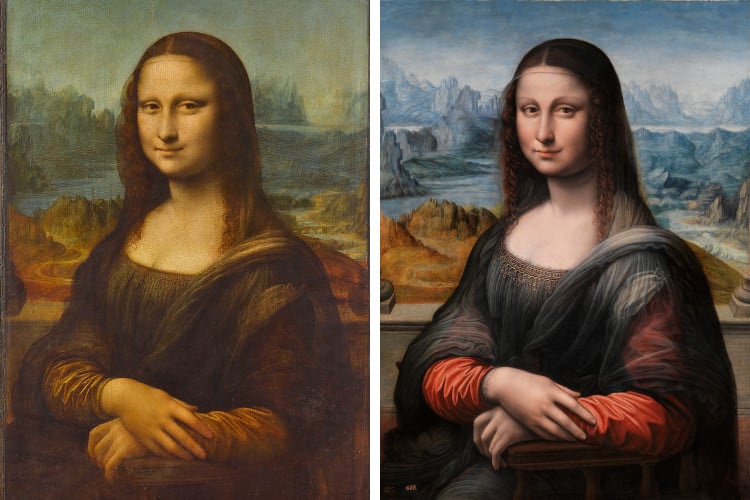Summary | Excerpt | Reviews | Beyond the Book | Read-Alikes | Genres & Themes | Author Bio

A Novel
by Hari KunzruThis article relates to Blue Ruin
One of the many questions about the art world probed by Hari Kunzru in his new novel Blue Ruin is the notion of provenance in the context of a working relationship between a well-known artist and his paid assistant. Does an assistant's creative output in any way belong to them? Or does it belong solely to the artist for whom they work?
 Artists have long utilized the support of assistants, also called fabricators, but these relationships have changed dramatically over time. The great masters of old carefully trained their assistants as apprentices, so their working relationships were closer to that of teacher and student. In their masters' studios, assistants would be given opportunities to hone their own skills. There are many examples of assistants developing their skills alongside their teachers. The iconic Mona Lisa painting by Leonardo Da Vinci has a twin image, today on display in Madrid's Prado, that many believe to be painted by one of Da Vinci's apprentices at the same time. This would have been the norm during that period. An assistant's fine work reflected well on their artist employers, and after completing their apprenticeships assistants could move into artist-guild membership and independent careers.
Artists have long utilized the support of assistants, also called fabricators, but these relationships have changed dramatically over time. The great masters of old carefully trained their assistants as apprentices, so their working relationships were closer to that of teacher and student. In their masters' studios, assistants would be given opportunities to hone their own skills. There are many examples of assistants developing their skills alongside their teachers. The iconic Mona Lisa painting by Leonardo Da Vinci has a twin image, today on display in Madrid's Prado, that many believe to be painted by one of Da Vinci's apprentices at the same time. This would have been the norm during that period. An assistant's fine work reflected well on their artist employers, and after completing their apprenticeships assistants could move into artist-guild membership and independent careers.
By contrast, many assistants hired by artists today are relatively unskilled workers or young artists willing to toil anonymously for minimal pay to complete the more mundane parts of a project. Highly skilled artists and craftspeople are, however, sometimes also hired to create full elements of artwork that their better-known artist employers might actually be unable to create on their own. This last group in particular has raised concerns within the art world. According to a Radio Times interview with Andrew Marr, artist David Hockney was "critical of artists with no craft, who delegate the making." Reflecting this view, he posted a sign on his gallery wall that said, "All the works here were made by the artist himself, personally." Hockney was widely understood to be referring to fellow artist Damien Hirst, who reportedly employed over 100 assistants at a time in his studio.
In 2022, a Paris court dismissed a claim by art fabricator Daniel Druet, who was demanding recognition as the creator of nine wax figures he had been commissioned to make for the Italian conceptual artist Maurizio Cattelan. According to Artnet, the core question in front of the court was "whether a fabricator can rightfully claim authorship of an artwork made on commission for an artist." Druet wanted recognition for the sculptures that he had created in support of Cattelan's art. The court rather elegantly sidestepped the question of ownership by tossing the case out, stating that in suing Cattelan's gallery and the museum showing the work, rather than the artist himself, Druet had addressed his grievance to the wrong people. The court's decision was lauded for having put an end to the question of assistants' ownership of work completed under contract for senior employer-artists, but in fact the court did not provide any real engagement with this central issue.
Whatever the role of the assistant in an artist's studio, an essay in the Guardian notes that the most striking element in the contemporary artist-assistant relationship is the fact that it is almost entirely hidden from public view. "Behind every great artist might well be a highly skilled team of assistants, but that truth is suppressed for fear of shattering our illusions: the lone-genius myth helps sales, and is partly what gives an artwork its mystique." Perhaps that is the real crux of the issue, that art is ultimately as much of a commodity as real estate or diet soda, and the details of its creation may be something that the art world has a strong interest in keeping hidden from the buying public.
Mona Lisa by Leonardo da Vinci (L) and apprentice (R), courtesy of My Modern Met
Filed under Music and the Arts
![]() This "beyond the book article" relates to Blue Ruin. It originally ran in July 2024 and has been updated for the
April 2025 paperback edition.
Go to magazine.
This "beyond the book article" relates to Blue Ruin. It originally ran in July 2024 and has been updated for the
April 2025 paperback edition.
Go to magazine.
Your guide toexceptional books
BookBrowse seeks out and recommends the best in contemporary fiction and nonfiction—books that not only engage and entertain but also deepen our understanding of ourselves and the world around us.